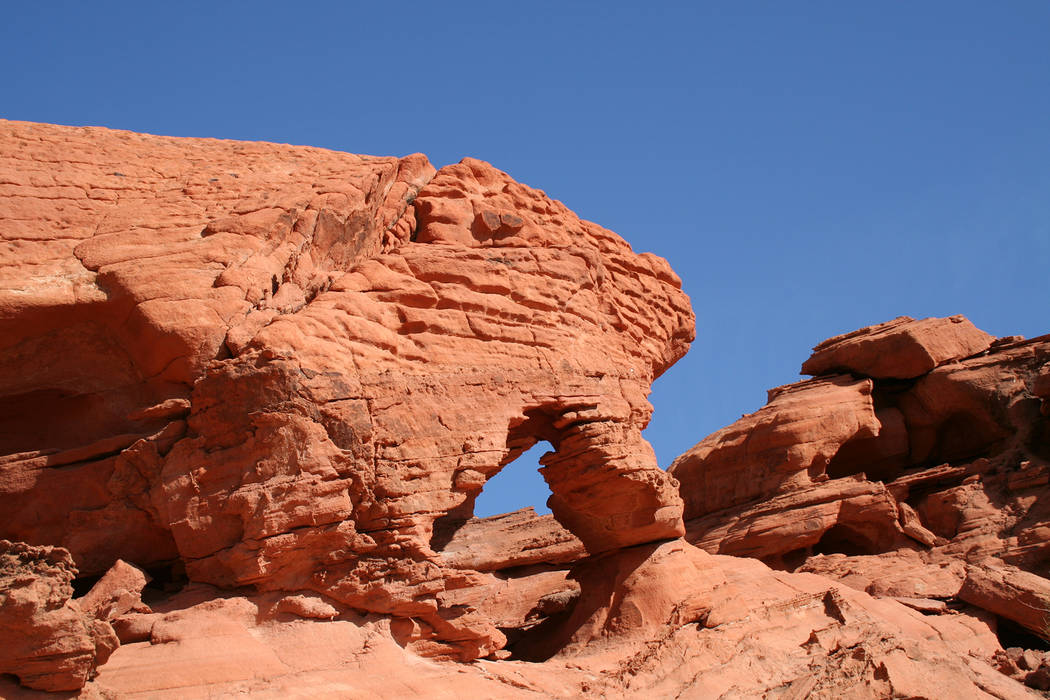
Bowl of Fire within the Lake Mead National Recreation Area is very similar to the fiery red sandstone formations in Valley of Fire State Park, with occasional outcroppings of yellow, pink and orange, but it is more remote and offers much more solitude.
In the time of the dinosaurs this landscape consisted of sand, which through time turned to stone. Uplifting, faulting, erosion, wind and weather shaped the formations into those you see now.
From the parking pullout, head northwest on the faint trail a few hundred yards toward the end (or right) of the prominent limestone ridge. Follow the path around to the other side and you will be able to see the Bowl of Fire outcropping, which looks quite dramatic next to the surrounding gray limestone hills and mountains.
You might have to do some route finding here and there, but take the time to stay on the path so you don’t trample the fragile cryptobiotic soil. Keep on the route toward the outcropping. You will enter small washes here and there and then cross Calville Wash, one of the main drainages of this area. Continue northwest and then drop down into another obvious wash and head right, upstream. Follow it for about a hundred yards or so until all easy progress is blocked, then scramble up the bank, and you have arrived in Bowl of Fire.
The hike is 2.2 miles round trip to the outcropping, but it offers plenty of options to explore farther.
Wear long pants of sturdy fabric for rock scrambling and hiking shoes or boots with good tread.
The elevation is 1,933 feet at the trailhead, nearly as high as Las Vegas, so dress for similar temperatures. Be sure to wear a hat for a hike because there is almost no shade. Also remember to bring water and food.
If you don’t get around to this hike until spring, the beavertail cactus will brighten your path with blooms, often the color of raspberry sherbet.
Note: Even with the government shutdown, hikers will be able to access the trailhead.
Many of Deborah Wall’s columns have been compiled into books about hiking in the Southwest. She is also the author of “Great Hikes, a Cerca Country Guide” and a co-author of the book “Access For All, Seeing the Southwest With Limited Mobility.” Wall can be reached at Deborabus@aol.com.